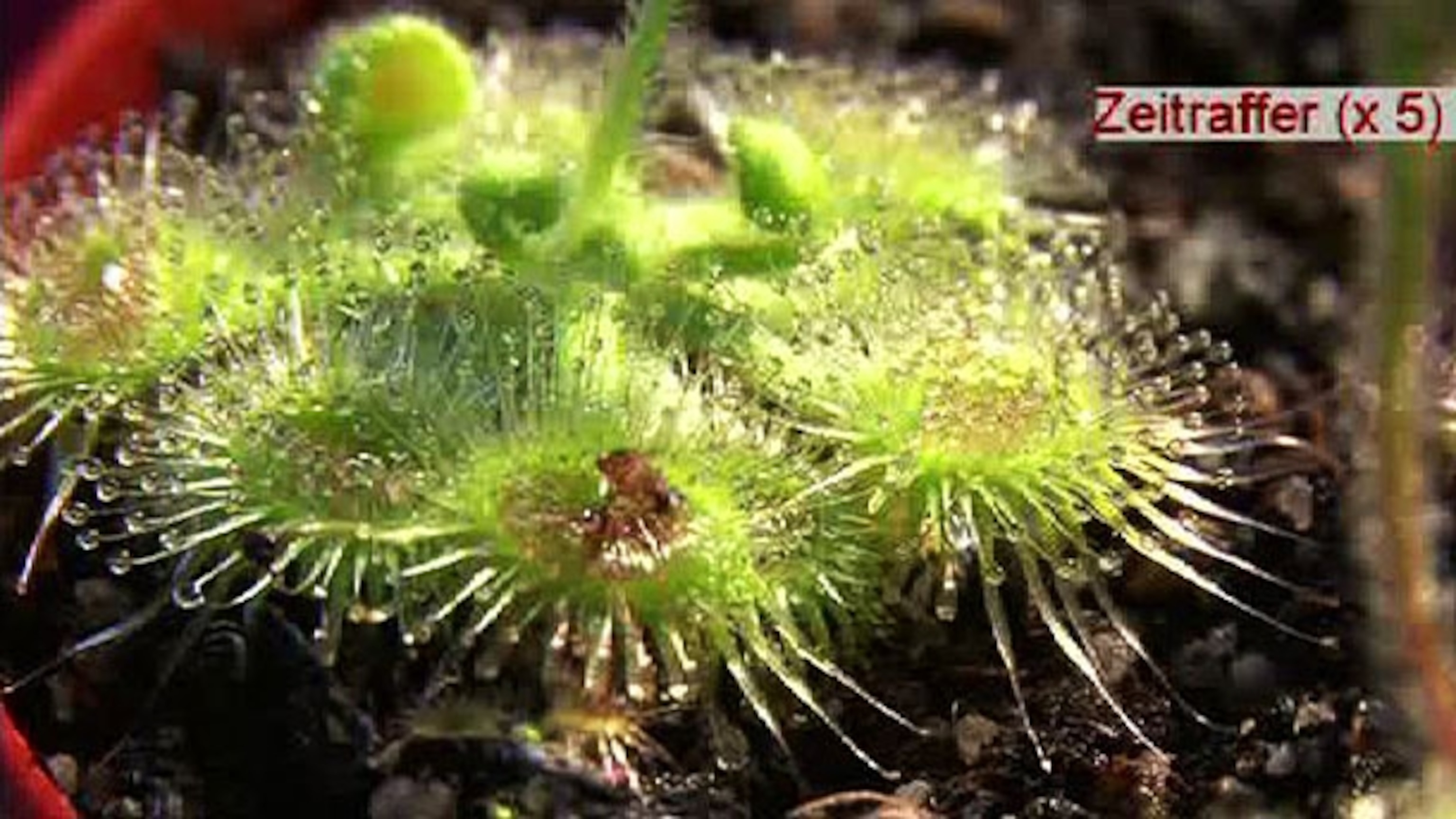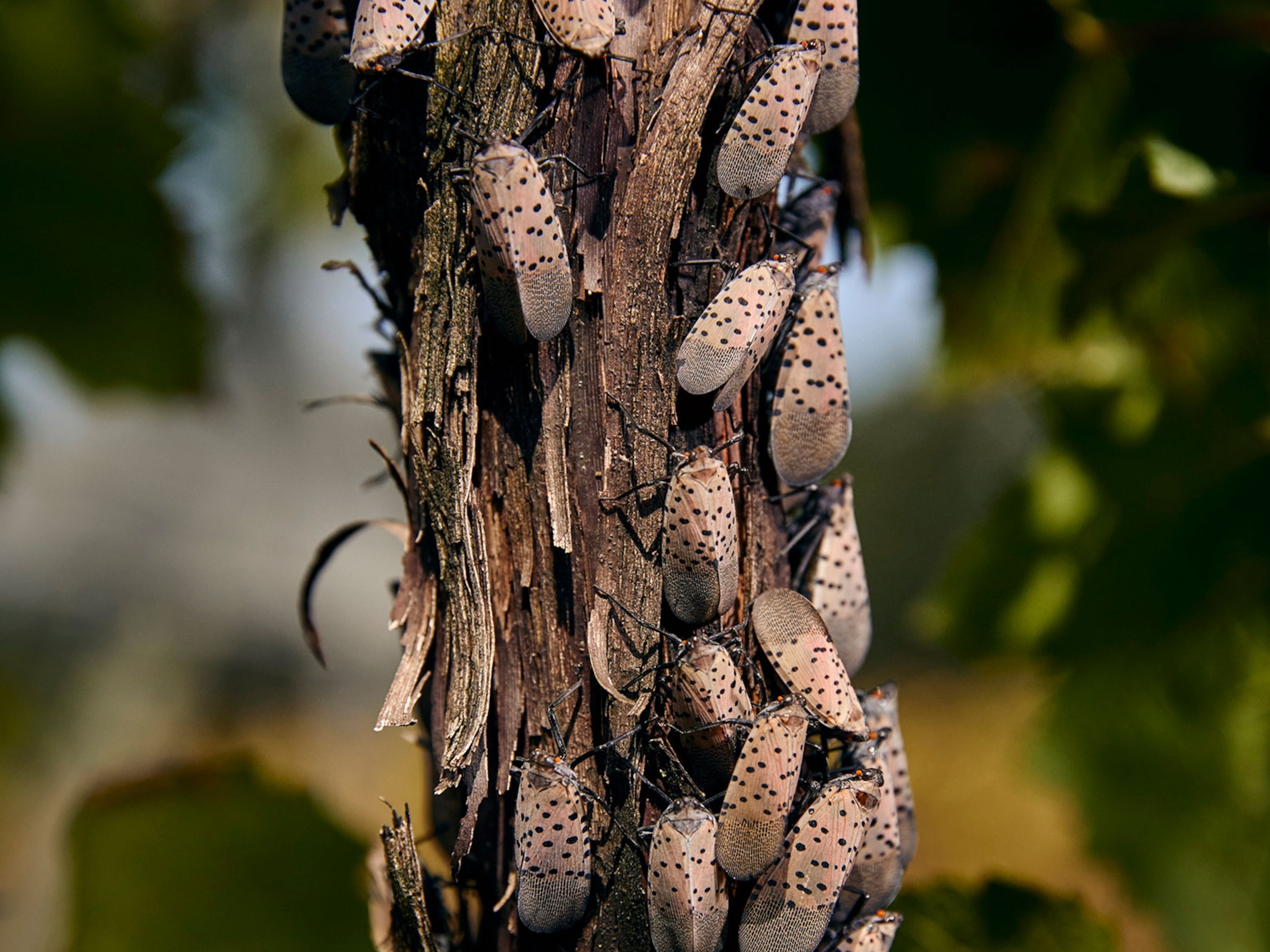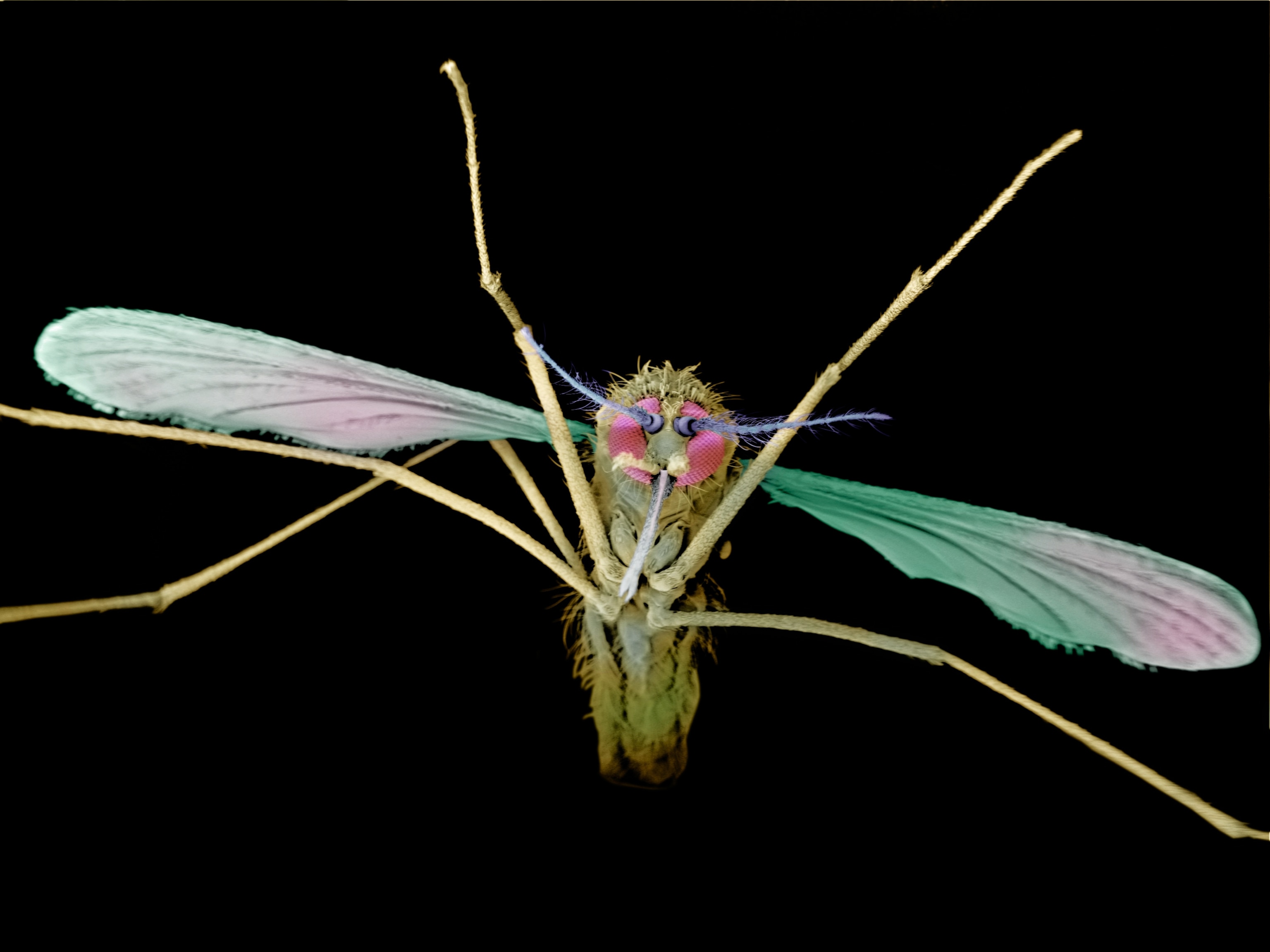
Tentacled, Carnivorous Plants Catapult Prey Into Traps
Sundew evolved special leaves to fling insects, study shows.
A carnivorous plant in eastern Australia uses snapping tentacles to catapult prey into sticky traps, a new study shows.
A type of rare sundew, Drosera glanduligera has long puzzled scientists because it has two types of thin, leaf protrusions that radiate outward.
Watch a video of the snap tentacles in action.
One type, the sticky, bug-ensnaring glue tentacle, is common on carnivorous plants. But the second type, the snap tentacle, lacks glue and makes jerking movements that had until now gone unexplained.
New experiments in the lab reveal that D. glanduligera's snap tentacles—which can sense moving prey—catapult insects directly onto the glue tentacles at the plant's center, where the prey is digested.
What's more, the catapult system is very effective—the insect almost never escapes, noted study co-author Thomas Speck, of the Plant Mechanics Group at Germany's University of Freiburg.
If the plant were about a hundred times larger, Speck quipped, "I wouldn't like to walk around southern Australia."
Catapult Plant Shows "Evolution in Action"
Overall, the discovery shows how plants can evolve to suit their needs, Speck said.
For example, D. glanduligera probably requires the catapult because of constant hunger. As a fast-growing plant that lives for less than a year, it requires a lot of nutrients, and therefore a lot of bugs. (Also see "Spiders, Carnivorous Plants Compete for Food-A First.")
"It's interesting to see how tiny the changes have to be to get a totally different behavior," Speck said.
Harvard ecologist Aaron Ellison says that in unchanging environments like eastern Australia, species that specialize in one thing—e.g., the sundew, catching flies with its catapults—can thrive, because they don't have to worry about unpredictable shifts.
On the other hand, in environments that are always changing, evolution favors generalist species that are resilient and adaptable.
The catapult is "cool," Ellison said by email—it "shows evolution in action."
The plant-catapults study appeared September 26 in the journal PLoS ONE.
You May Also Like





